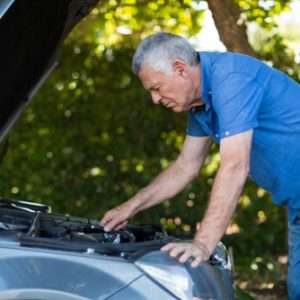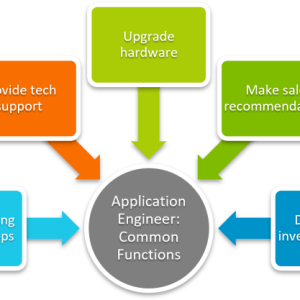Ever wondered what’s really going on inside your car’s engine? It’s a complex‚ fascinating world of pistons‚ valves‚ and controlled explosions. For years‚ only mechanics with specialized tools could get a peek. But now‚ thanks to advancements in technology‚ you can get a look yourself! We’re talking about car engine cameras – a game-changer for diagnostics‚ maintenance‚ and even just satisfying your curiosity. Let’s dive into the details of these amazing devices;
Why Use a Car Engine Camera? Unveiling the Benefits
So‚ why would you even want a car engine camera? Well‚ there are several compelling reasons. Think about it: being able to visually inspect the internal components of your engine without tearing it apart? That’s huge! Let’s explore some key benefits:
- Early Problem Detection: Catch potential issues before they become major (and expensive!) headaches.
- Precise Diagnostics: Pinpoint the exact source of a problem‚ saving time and money on unnecessary repairs.
- DIY Confidence: Gain a better understanding of your engine and feel more confident tackling basic maintenance tasks.
- Documentation: Keep a visual record of your engine’s condition over time.
Imagine you’re hearing a strange ticking noise. Instead of blindly replacing parts‚ you could use a car engine camera to see if there’s a worn valve or a damaged piston. Pretty cool‚ right?
Pro Tip: Always consult your car’s repair manual and follow safety precautions when working on your engine‚ even with a camera!
The Power of Visual Inspection with a Car Engine Camera
The ability to see the problem is invaluable. It’s one thing to read a diagnostic code; it’s another to actually see the damage. This visual confirmation can lead to faster‚ more accurate repairs.
Types of Car Engine Cameras: Choosing the Right Tool
Not all car engine cameras are created equal. There are various types available‚ each with its own strengths and weaknesses. Let’s take a look at some common options:
- Endoscopic Cameras (Borescopes): These are long‚ flexible cameras with a light source at the tip. They’re ideal for accessing tight spaces and getting a close-up view of internal components.
- Wireless Inspection Cameras: These cameras transmit images wirelessly to a smartphone or tablet‚ offering greater flexibility and convenience.
- USB Inspection Cameras: These cameras connect directly to a computer via USB‚ allowing you to view and record images on a larger screen.
The best choice for you will depend on your specific needs and budget. Consider the size and accessibility of your engine‚ the level of detail you require‚ and how often you plan to use the camera.
Factors to Consider When Selecting a Car Engine Camera
Before you buy‚ think about these key features:
- Image Quality: Look for a camera with high resolution for clear‚ detailed images.
- Cable Length: Choose a cable length that’s appropriate for the size of your engine.
- Light Source: Ensure the camera has a bright‚ adjustable light source for optimal visibility.
- Durability: Opt for a camera that’s built to withstand the harsh environment inside an engine.
Interesting Fact: Some advanced car engine cameras even have the ability to record video and take still photos‚ allowing you to document your findings for future reference.
Using Your Car Engine Camera: A Step-by-Step Guide
Okay‚ you’ve got your car engine camera. Now what? Don’t worry‚ it’s not as complicated as it looks. Here’s a basic guide to get you started:
- Prepare Your Engine: Ensure the engine is cool and turned off. Disconnect the spark plugs to prevent accidental starting.
- Locate Access Points: Identify suitable access points‚ such as spark plug holes or oil drain plugs.
- Insert the Camera: Carefully insert the camera into the access point‚ being mindful of any sensitive components.
- Adjust the Lighting: Turn on the light source and adjust the brightness as needed.
- Inspect and Record: Slowly move the camera around‚ carefully inspecting the internal components. Record any findings that you deem important.
Safety First When Using a Car Engine Camera
Remember‚ safety is paramount. Always wear appropriate safety gear‚ such as gloves and eye protection. And never attempt to use a car engine camera while the engine is running!
Troubleshooting Common Car Engine Camera Issues
Even with the best equipment‚ you might encounter some challenges. Let’s address a few common issues:
- Poor Image Quality: Check the camera lens for dirt or debris. Adjust the lighting and focus.
- Limited Visibility: Ensure the light source is bright enough. Try cleaning the inside of the engine with a solvent.
- Camera Won’t Connect: Check the connections and drivers. Try restarting your computer or device.
Don’t be afraid to consult the camera’s user manual or search online for troubleshooting tips. There’s a wealth of information available to help you get the most out of your car engine camera.
FAQ: Car Engine Cameras
Frequently Asked Questions About Car Engine Cameras
Q: Are car engine cameras easy to use?
A: Yes‚ most are designed for user-friendliness‚ but practice makes perfect!
Q: Can I use a car engine camera on any type of engine?
A: Generally‚ yes‚ but check the camera’s specifications for compatibility.
Q: How much do car engine cameras cost?
A: Prices vary widely‚ from affordable to professional-grade.
So‚ there you have it – a glimpse into the world of car engine cameras. They’re a powerful tool for anyone who wants to understand their engine better and take control of their car’s maintenance. With a little practice‚ you’ll be diagnosing problems like a pro. Imagine the peace of mind knowing you can catch issues early. It’s an investment in your car’s longevity and your own mechanical knowledge; Happy inspecting!




